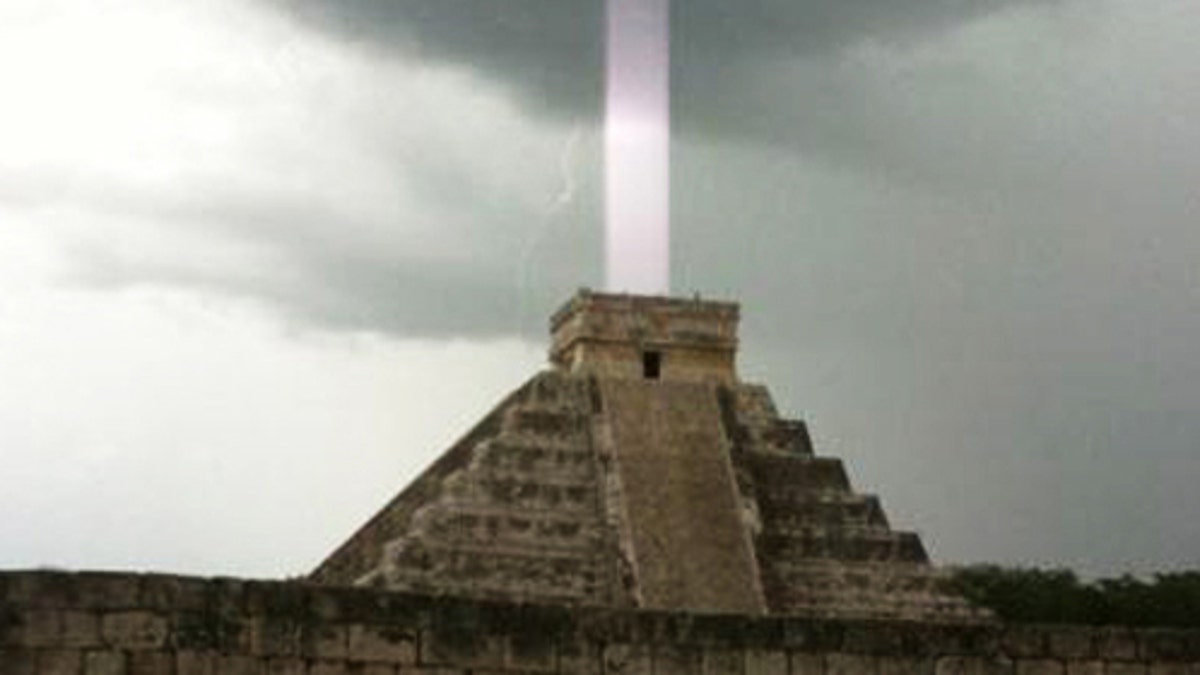
"El Castillo," a Mayan temple on the Yucatan Peninsula in Mexico, with a mysterious "light beam" emerging from the top. (Hector Siliezar)
The1,600-year-old faces of the Maya sun god emerged from the ground in Guatemala.
Dubbed the Temple of the Night Sun, the newly discovered temple depicts the sun god as a shark, blood-drinker, and jaguar.
The Maya civilization, which differs from the centralized Inca and Aztecs, spread out over the much of what are now Guatemala, Belize, and Mexico's Yucatán region.
The great rivalries between Maya kingdoms add intrigue to many interested in the ancient civilization, including Brown University archaeologist Stephen Houston, who announced the discovery of the new temple.
"This has been a growing awareness to us since the 1990s, when it became clear that a few kingdoms were more important than others," Houston said.
According to National Geographic, the kingdom historically located on what is now Guatemala was known as El Zotz. It was a small kingdom that made efforts to show they were still capable of making a big impression.
Houston and his colleagues spotted the first signs of the Temple of the Night Sun in 2010 next to another Maya ruin. What they did not expect to find were the artworks aligning the temple which only recently came to light behind centuries and centuries of earth and vegetation.
Five-foot-tall stucco masks decorate the sides of the temple. They tell the story of the Maya sun god with his changing faces as the day progresses.
University of Pennsylvania Maya scholar Simon Martin said the masks on the recently discovered El Zotz temple are "completely unique." Beyond this, they can provide valuable insight and verify theories about Maya portrayals of the sun god.
"We have images of the sun god at different stages ... but we've never found anything that puts it all together," said Martin, who was not involved in the project.
Houston believes the temple may be an important discovery for more reasons than the artwork. Because the sun is closely related with new beginnings in the Maya culture and the sun god with kingship, the Temple of the Night Sun’s location next to a tomb might indicate that tomb belongs to the very first king of El Zotz—the founder of the dynasty.
Mysteries surrounding the temple surfaced along with it. For reasons unknown to archaeologists, the temple appears to have been abandoned near the fifth century.
"It's like they just dropped their tools and left" in the middle of once again expanding the temple, Houston said. "I think what you're looking at is the death of a dynasty."
Archaeologists believe there could be more to learn as the rest of the temple is uncovered.
Follow us on twitter.com/foxnewslatino
Like us at facebook.com/foxnewslatino
